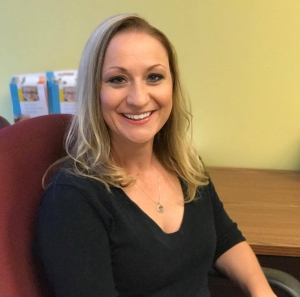Beyond the Cure: Acute Lymphoblastic Leukemia Survivorship is a Journey
Childhood cancer survivorship is a journey. Survivors and their families need to be prepared for life after cancer, and the National Children’s Cancer Society (NCCS) is committed to them every step of the way.
Real World Health Care recently interviewed NCCS’s Jessica Cook, MSW, vice president of Patient & Family Services, about that journey and how NCCS supports children with acute lymphoblastic leukemia (ALL) and their families.
Cook has been with NCCS, serving children with cancer and their families, for 22 years. She oversees all national NCCS programs and takes a “no matter what” approach to creating a clear path through the maze of childhood cancer and survivorship.
“Childhood cancer survivorship is a life-long journey, where survivors require specialized, long-term follow-up care and support to stay healthy years after their treatment has ended,” she said. “The NCCS remains committed every step of the way.”
Support for ALL Families
Real World Health Care: In what ways does the NCCS support children with acute lymphoblastic leukemia and their families?
Jessica Cook: In several ways. Our Family Support Program provides practical and emotional assistance to parents, caregivers and survivors. Our Transportation Assistance Fund ensures children have access to life-saving treatment. Our Emergency Assistance Fund provides an unrestricted stipend to families whose child has been inpatient or relocated for an extended period of time. Our Late Effects After Treatment Tool (LEATT) provides a personal online assessment of potential late effects based on their specific diagnosis and treatment. We also award college scholarships to childhood cancer survivors to help them achieve their future goals. To date, we’ve awarded 544 scholarships to 203 recipients totaling $1.9 million.
Late Effects and Long-Term Care
RWHC: You mentioned “late effects.” Can you provide a few examples of late effects and their impact on overall health and well-being?
JC: Due to the toxicity of the treatment received, 90 percent of childhood cancer survivors will experience some late effects of treatment and around a third will have severe, disabling or life-threatening chronic conditions. Diabetes mellitus and metabolic syndrome are among the most common late effects in childhood cancer survivors and are major risk factors for cardiovascular disease. Identifying risk factors at an early stage and then aggressively employing risk reduction strategies like dietary changes, physical activity and early treatment of cardiovascular disease is key to ensuring the best quality of life among survivors.
RWHC: Why is long-term follow-up care so vital for children who have been treated with ALL?
JC: Because childhood cancer is rare, most primary care health providers may only see one or two childhood cancer survivors during their medical careers. As a result, they may not be familiar with the late effects of childhood cancer treatment. Long term follow-up clinics educate each patient on specific risks from their treatments. Knowing the possible risks will allow patients to better monitor their health and address any complications early, which leads to overall better health and educational outcomes.
Beyond the Cure
RWHC: What is the goal of the NCCS Beyond the Cure program?
JC: The mission of Beyond the Cure is to help childhood cancer survivors integrate the cancer experience into their new life as survivors, successfully handle the challenges that are ahead of them and celebrate survivorship.
RWHC: What role do patients and their families play in the creation of the program and its ongoing initiatives?
JC: Input from families and childhood cancer survivors led to the creation of the program. Families and survivors still provide invaluable insight when reviewing our print pieces, serving on the Beyond the Cure Scholarship Program review committee and sharing their experiences of unmet needs within the survivorship community.
RWHC: Can you provide a few examples of how the program prepares survivors and their families for life after cancer?
JC: Earlier, I mentioned our Late Effects After Treatment Tool (LEATT), which provides a detailed assessment of potential late effects based on the diagnosis and treatment the individual received. It offers guidance on beneficial screenings and recommendations for healthy lifestyle choices and will be available on mobile platforms later this year. The NCCS also offers educational publications for young adult cancer survivors and their caregivers that specifically address various aspects of survivorship. In addition, we sponsor survivorship conferences that aim to educate childhood cancer survivors about life after cancer.
We also invite patients and their families to join our Childhood Cancer Support Facebook group. It is a safe, compassionate place for patients and families to connect and find resources and is over 1,000 members strong.


















